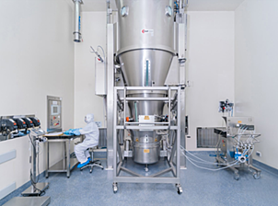Turning a promising drug candidate into a successful pharmaceutical product involves scaling-up the processes, developed in the research lab, in order that commercial supply can be achieved. The technical hurdles involved in making this transfer can be daunting.
Also, it is not uncommon for changes to be made in the manufacturing process and/or chemistry of a drug product following approval and the changes can continue throughout its life cycle to improve the product. Depending upon the circumstances, there can be changes to the raw materials, production process, equipment train, manufacturing site and/or batch size which can ultimately affect Critical Quality Attributes (CQAs) of a drug or finished product.
Fortunately, pharmaceutical companies can help themselves by planning for scale-up and commercialization if they are doing these Technology Transfers at the earliest stages of drug development.
Structured Approach for Scale-Up Activities Critical
In general, there are two critical phases to keep in mind when scaling-up drug production processes.
First, it is vital that the chemistry on which the production or synthesis process relies is fully understood. This detailed process knowledge is critical to the efficient production of the formulation at commercial volumes.
Drug manufacturers also need to keep in mind that they are a commercial operation. As a result, developing a clear strategy to control production and material costs during production is critical to the success of any scale-up process.
Selecting the Appropriate Manufacturing Partner for Your Product
Key equipment, process knowledge, and a control plan are also hugely important to CDMO selection. Choosing a manufacturing partner that has experience working with similar processes and is able to manufacture product at a range of scales is fundamental.
And the level of experience of a particular processing technique could be a key deciding factor. For example, when using certain popular granulation processes and coating techniques it can be challenging to obtain consistent results during scale-up. Therefore, knowledge and experience are crucial.
Experienced CDMOs know how best to control such variation and how to seek solutions to inevitable challenges encountered during a technology transfer.
Equipment Selection Has Significant Impact
 Pharmaceutical companies also need to keep in mind that the manufacturing equipment used can have a significant impact on the product.
Pharmaceutical companies also need to keep in mind that the manufacturing equipment used can have a significant impact on the product.
Fortunately, the US Food and Drug Administration’s (FDA) has issued scale-up and post-approval changes (SUPAC) guidance documents, which are an ideal starting point to ensure similarities and a defined regulatory path.
The guidelines set out a structured approach that sponsors of new applications as well as generic drug firms can use to plan how they will scale up production processes in an effective and efficient manner.
One key recommendation is that companies use calculated scale up factors as a starting point to establish Critical Process Parameters (CPP). The FDA also identifies the types and specifications of equipment available at different scales as a guide.



